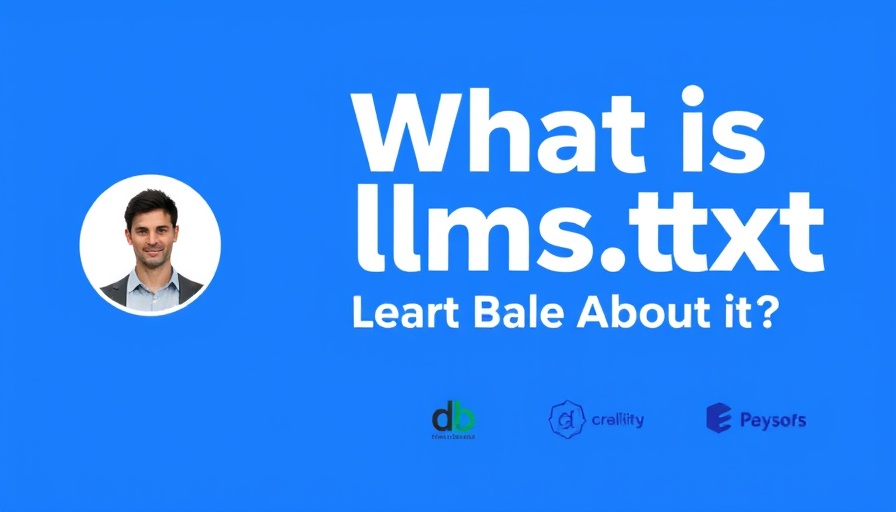
Boost Your SEO: Understanding Google’s Take on Tabbed Navigation
02/11/2025
0
11
Unraveling the Complexities of Tabbed Navigation for SEOIn the ever-evolving landscape of SEO, understanding how search engines perceive your website structures is crucial, especially when it comes to tabbed navigation. Small business owners, marketers, and agencies often grapple with making their content more accessible and SEO-friendly. In a recent discussion, John Mueller from Google shed light on validating whether Google can effectively index content that is hidden within tabbed navigation. This insight can prove invaluable in your digital marketing strategy.The Mechanics of Tabbed Navigation VisibilityAs John Mueller notes, currently, none of Google's crawlers actively click on elements to expose hidden DOM content. This means that even if you have rich content tucked into tabs, if it isn't fundamentally available in the site’s markup, there’s a chance it won’t be indexed properly. By ensuring that the content within your tabs loads in the DOM initially, you're boosting your chances of it being indexed. However, challenges arise if the content is relied upon onclick handlers alone, as this will inhibit Google's ability to discover these URLs naturally.Best Practices for Tabbed Navigation ImplementationTo further enhance your website's visibility, consider following John Mueller's recommendations by using elements for navigation, rather than merely relying on JavaScript click events. By allowing separate URLs for each tab, you provide search engines with distinct paths to index your content, supporting a more thorough crawl experience.The User Experience: A Critical FactorThis approach not only benefits SEO but also enriches the user experience. As a small business, keeping your customers engaged on your site is paramount. When users don’t find what they expect immediately—such as content they see in search results—it may lead to them abandoning your page, which can negatively impact your overall SEO rankings. With this in mind, it's vital to consider how users interact with your content, making information not just easier to find but also intuitive to navigate.Insight from Current Trends in AI and SEOAs digital marketers, looking toward the future is as necessary as analyzing current trends. The intersection of SEO and AI technology is burgeoning, opening new avenues for optimizing user experience. For instance, understanding how AI can aid in predicting user navigation behaviors allows businesses to develop a proactive rather than reactive approach in their strategies. Incorporating AI tools can streamline your marketing efforts, making it easier to discover how navigation impacts user engagement and site traffic.Common Pitfalls to Avoid in SEO Navigation StrategiesMany marketers may mistakenly believe that tabbed navigation is merely a cosmetic choice. However, it can greatly influence user behavior and search engine rankings. A pivotal insight here is to avoid overloading your page with lengthy hidden content. Users looking for specific information are not likely to navigate through layers of tabs to find what they want. Instead, emphasize placing the most sought-after content front and center to ensure it captures attention and encourages longer browsing sessions.Empowering Your Business Through Thoughtful Navigation DesignEmbracing thoughtful tabbed navigation can significantly bolster your website's performance in search results while benefiting user journey on your site. A pragmatic approach involves not just focusing on what crawlers see but prioritizing what users experience and expect. By leveraging recent insights from experts like Mueller, businesses can enhance their online presence methodically while also aligning their strategies to benefit from both SEO advancements and user-centric designs.
This website contains content that has been created using AI. Results created through the use of AI can be inaccurate, unreliable, and subject to hallucinations. Ai SEO Podcast disclaims any and all liability arising from use of its AI tool or services. Results created through the use of AI are generally not protectable under intellectual property law, so Users assume all risk associated with potential liability and non-protectability arising from its use. For further details, see the Terms, available here.
 Add Row
Add Row
 Add
Add

 Add Row
Add Row
 Add Element
Add Element























 Add Row
Add Row
 Add
Add

